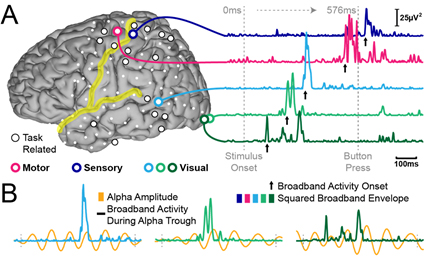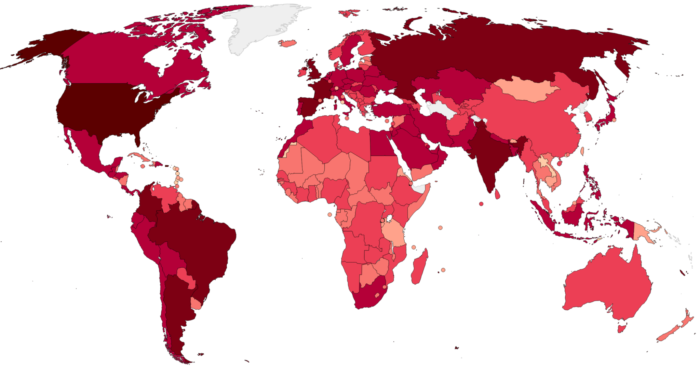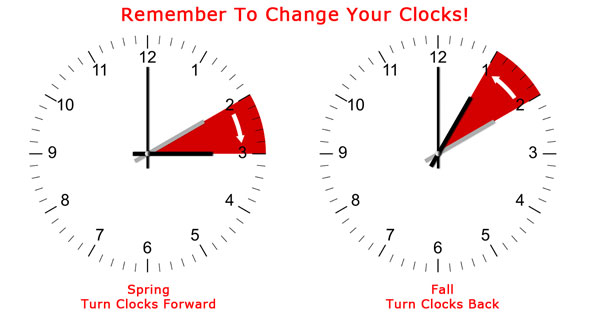 The headline in the New York Post reads: 1 in 331 billion chance: Same New York lottery numbers drawn twice in one day. Sounds impressive – the problem is, it’s entirely wrong. What is true is that the same five numbers, 18, 21, 30, 35, and 36, were drawn in the New York Take Five lottery in both the midday and evening drawings for Thursday, October 27. The Post reports that “experts” (unnamed) told them the odds of this happening are 1 in 331 billion.
The headline in the New York Post reads: 1 in 331 billion chance: Same New York lottery numbers drawn twice in one day. Sounds impressive – the problem is, it’s entirely wrong. What is true is that the same five numbers, 18, 21, 30, 35, and 36, were drawn in the New York Take Five lottery in both the midday and evening drawings for Thursday, October 27. The Post reports that “experts” (unnamed) told them the odds of this happening are 1 in 331 billion.
The Post called this a “lottery miracle” but in fact it is a classic example of what is called, with good reason, the “lottery fallacy”. The odds of winning the Take Five with one ticket on any particular game is 1 in 575,757. What the Post’s experts did was take a calculator and multiple those odds by itself, yielding 331,496,123,049. (So in their view an expert is anyone with a calculator.) But those are the odds of those five numbers coming up on two consecutive draws – not the odds of any five numbers repeating. The chance of any five numbers repeating is simply 1 in 575,757 – the odds of the evening numbers being the same as the midday’s (whatever those midday numbers were). This lottery happens every day, so in the last 10 years that would be 3,650 opportunities for this to happen. The odds of this coincidence happening each decade is closer to 1 in 157.
But the odds are even greater of such a coincidence happening for various reasons. First, there are about 180 lotteries in the world, 46 in the US alone. More subtly, we are determining the criteria for a lottery coincidence after the fact. What if the identical numbers came up twice in a row, just not twice in the same day (say an evening draw and the following morning draw). The Post would still falsely consider that a 1 in 331 billion miracle. That doubles the chance right there, for now both the morning and evening draw can match the one before (1 in 78 per decade).
People, however, consider it an amazing coincidence if the same numbers come up close together, even a few days apart. In 2009 the Bulgarian lottery turned out the same numbers in one week. This sparked the same reaction as the New York lottery results. This dramatically increases the probability of a hit, for now each sequence of numbers can be compared to every other sequence of numbers within several days. For one week of Lottery Five draws, that 14 sets of numbers, and 91 possible comparisons (using the formula k(k-1)/2).
There are other types of lottery coincidences also, such as the same person winning a lottery twice (even with different numbers). When this happens again many media outlets will commit the lottery fallacy and report the wrong odds. The odds of this specific person winning this specific lottery with two individual purchased tickets may be astronomical, but the odds of anyone winning any lottery twice having purchased multiple tickets is pretty good. Some kind of lottery coincidence should happen on a regular basis, and it does, at about the rate proper statistics predicts.
We can apply the lottery fallacy principle to things other than the lottery. We tend to notice patterns that stick out, such as any coincidental alignment of facts or occurrence. We are then impressed with the incredibly low odds of that particular alignment happening. But again, we should be considering the probability of any alignment happening. You dream of someone who haven’t seen in years, and they call the next day. Must be psychic – or just the predictable alignment of random events in your life. People tend to underestimate the possibility of an alignment, because they underestimate the number of variables at work.
Let’s say that 100 definable things happen to you in an average week (just to use a representative number – the actual number is likely far greater). That would be 4,950 opportunities for any two of those things to align in some way – every week. We also use loose criteria for what constitutes an alignment, usually deciding the criteria after the fact. This is true of all almost 8 billion people on the planet (7.98 – almost there).
The number of opportunities for an extremely unlikely alignment happening is equally massive. Apparently strange coincidences, in the aggregate, should happen all the time – so it should be no surprise that they do.
 The allure of the myth of Atlantis is understandable, and it has been promulgated in popular culture for over a century. As evidence of the draw of this topic is the comments thread to my discussion of the Richat Structure and why it is not Atlantis. People clearly want to talk about it.
The allure of the myth of Atlantis is understandable, and it has been promulgated in popular culture for over a century. As evidence of the draw of this topic is the comments thread to my discussion of the Richat Structure and why it is not Atlantis. People clearly want to talk about it.
 The notion of near death experiences (NDE) have fascinated people for a long time. The notion is that some people report profound experiences after waking up from a cardiac arrest – their heart stopped, they received CPR, they were eventually recovered and lived to tell the tale. About 20% of people in this situation will report some unusual experience. Initial reporting on NDEs was done more from a journalistic methodology than scientific – collecting reports from people and weaving those into a narrative. Of course the NDE narrative took on a life of it’s own, but eventually researchers started at least collecting some empirical quantifiable data. The details of the reported NDEs are actually quite variable, and often culture-specific. There are some common elements, however, notably the sense of being out of one’s body or floating.
The notion of near death experiences (NDE) have fascinated people for a long time. The notion is that some people report profound experiences after waking up from a cardiac arrest – their heart stopped, they received CPR, they were eventually recovered and lived to tell the tale. About 20% of people in this situation will report some unusual experience. Initial reporting on NDEs was done more from a journalistic methodology than scientific – collecting reports from people and weaving those into a narrative. Of course the NDE narrative took on a life of it’s own, but eventually researchers started at least collecting some empirical quantifiable data. The details of the reported NDEs are actually quite variable, and often culture-specific. There are some common elements, however, notably the sense of being out of one’s body or floating. A panel of 386 experts from various disciplines and 122 countries have put together a
A panel of 386 experts from various disciplines and 122 countries have put together a  It’s that time of year again – the time when we debate, yet again, whether or not we should get rid of shifting the clocks twice a year and if so, which time to make permanent, DST or standard time. It does seem like this debate has been heating up in recent years, but it is unclear if we have a political consensus sufficient to make a change. In March of this year the Senate actually passed the
It’s that time of year again – the time when we debate, yet again, whether or not we should get rid of shifting the clocks twice a year and if so, which time to make permanent, DST or standard time. It does seem like this debate has been heating up in recent years, but it is unclear if we have a political consensus sufficient to make a change. In March of this year the Senate actually passed the  The headline in the New York Post reads:
The headline in the New York Post reads: 




